Most folks (myself included) recognize Spider Solitaire as the most difficult Solitaire variant out there. However, it contains different subvariants. The most formidable is 4 Suits Spider Solitaire. Mastering 4 Suits is something I’ve dedicated lots of my time to (with varying degrees of success).
There’s definitely a strategy to winning at 4 Suits Spider Solitaire. Yup, it’s not all luck (although it’s not all skill either). To understand the relevant strategy, we must first go through both the underlying concepts and the basics of Spider Solitaire. This means that we have to take a journey through 1 Suit Spider Solitaire before we get to the 4 Suits behemoth.
Understanding the Basics
Spider Solitaire is split into three different subvariants: 1 Suit, 2 Suits, and 4 Suits. While each version has the same basic rules, the more advanced multi-suit options are more nuanced (and complicated) than the entry-level 1 Suit version. So, what’s common across all the variants? Well, each game of Spider Solitaire starts with two decks of cards (104 cards; so, no Jokers).
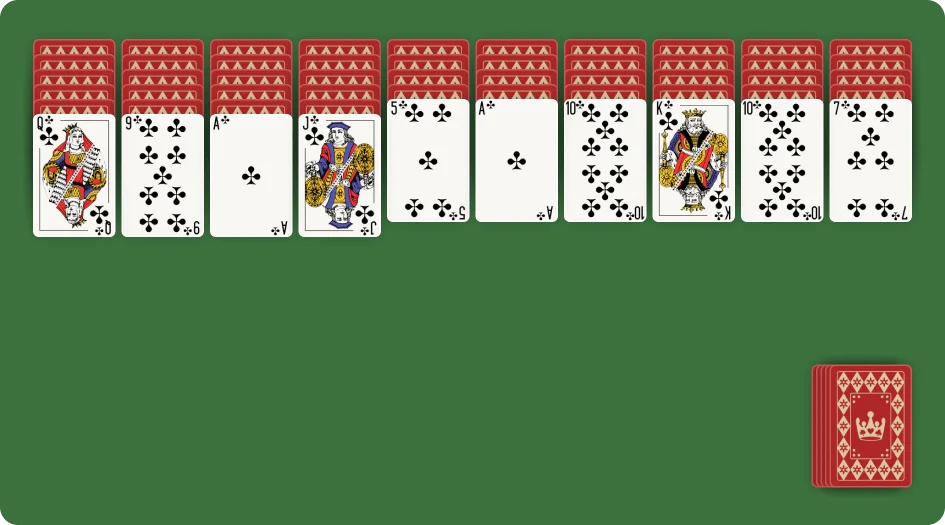
With 1 Suit Spider Solitaire, the 104 cards will all be the same suit. With 2 Suits and 4 Suits, the 104 cards will be split into two and four suits, respectively.
| Spider Solitaire variant | Number of suits | Number of cards | Number of sequences per suit |
| 1 Suit Spider Solitaire | One suit | 104 cards | Eight sequences |
| 2 Suits Spider Solitaire | Two suits | 104 cards | Four sequences per suit |
| 4 Suits Spider Solitaire | Four suits | 104 cards | Two sequences per suit |
The goal in the game is to remove all the cards from the setup by arranging them in descending order (from King to Ace). Also, remember that you can’t connect two cards if they aren’t in the correct order (just like Klondike and other conventional variants). For instance, you can only drag a Seven onto an Eight, a Queen onto a King, and so on. You can also drag entire sequences (e.g., a sequence of Six-Seven-Eight) onto a Nine.
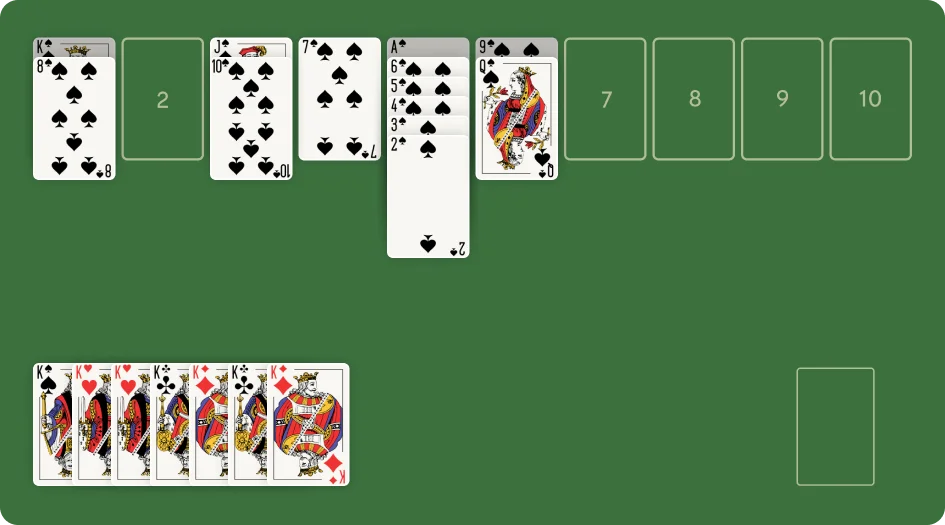
Nuances of the More Advanced Variants
Something important to remember is that you must arrange all the cards in the same suit for them to be ‘complete’ and moved off the setup. In 1 Suit Spider Solitaire, this rule doesn’t change anything since all the cards are already the same suit. However, in the 2 Suit and 4 Suit variants, this creates another layer of complexity.
You can drag a card of a different suit onto its predecessor (so a red Six can fall on a black Seven). However, even if you complete a sequence of cards using mixed suits, it won’t count as a completed sequence that can be removed from the game.
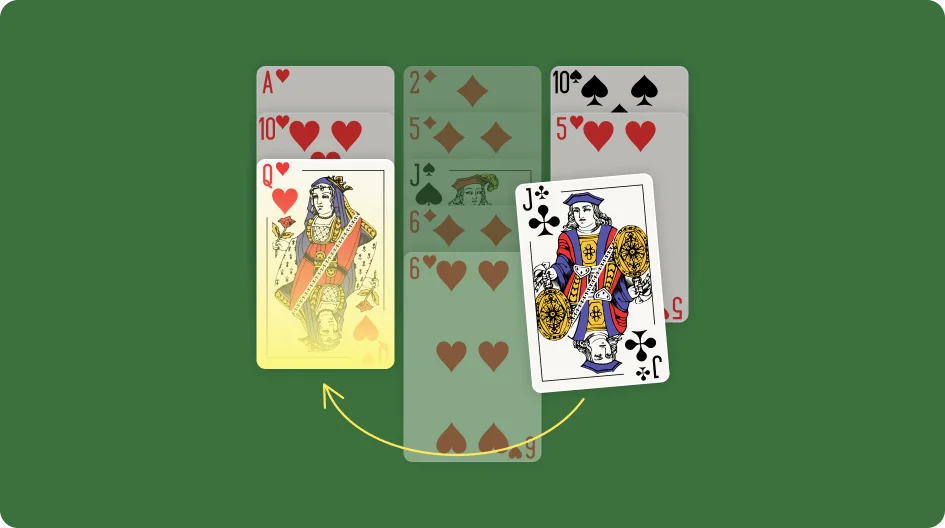
Remember that rule about being allowed to move entire sequences if they’re in order? Well. you can’t do that if the sequence includes cards of different suits. You can only move sequences as long as they are in order and the same suit.
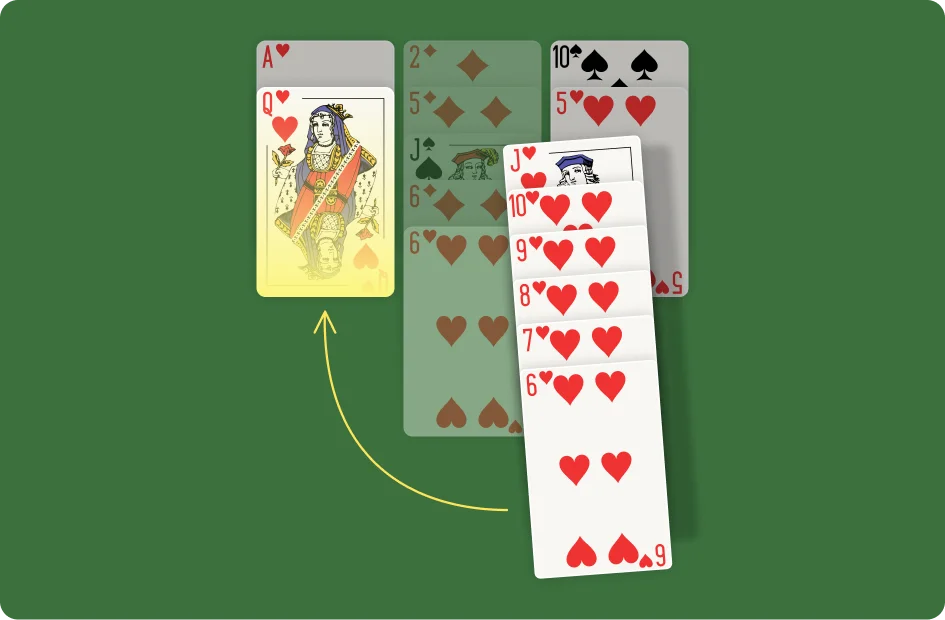
You can imagine how this all makes 4 Suit Spider incredibly complicated. Hopefully, the strategies I’ll outline later will help you ‘tame this beast’.
Pre-Game Setup and Tips
If you’ve played other Solitaire variants, then the setup in Spider won’t be too foreign. It contains essentially the same elements:
- The Tableau: This consists of ten columns of cards. At the beginning of the game, each column is dealt with a certain number of cards. The top card in each column is face-up, while the rest are face-down. The number of cards in each column from left to right usually follows this pattern: 6, 6, 6, 6, 5, 5, 5, 5, 5, 5. This means that a total of 54 cards are dealt into the tableau.
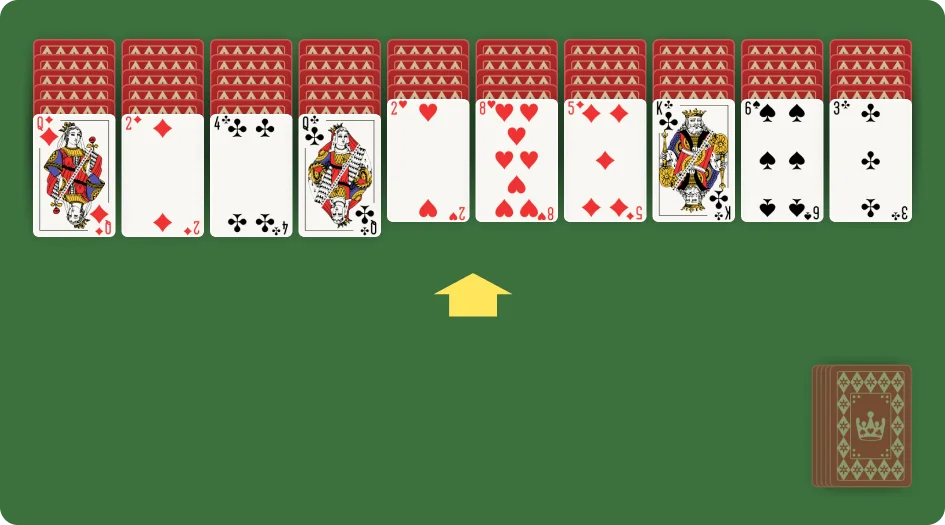
- The Stock pile: The remaining 50 cards are left in the stock pile, face down. You can draw from these during the game to add new rows of cards to the tableau. If you’re playing online, then one card will be dealt to each column in the tableau when you click on the stock pile.
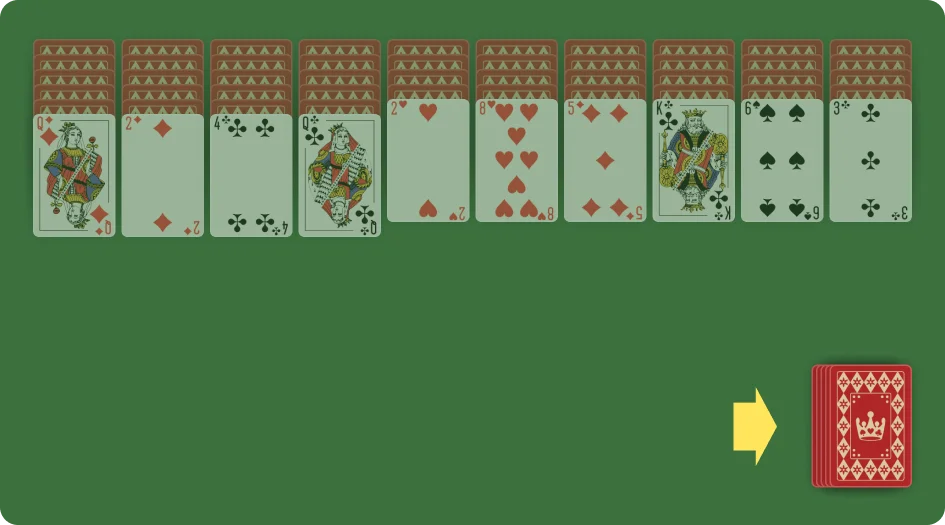
- Cleared Stacks: Completed sequences are removed from the tableau to clear up space. Depending on which platform you’re playing on, you’ll usually find face-down sequences of cards at the bottom of your screen. These represent the cleared stacks. Once you complete a sequence, all the cards will be ‘whooshed’ there.
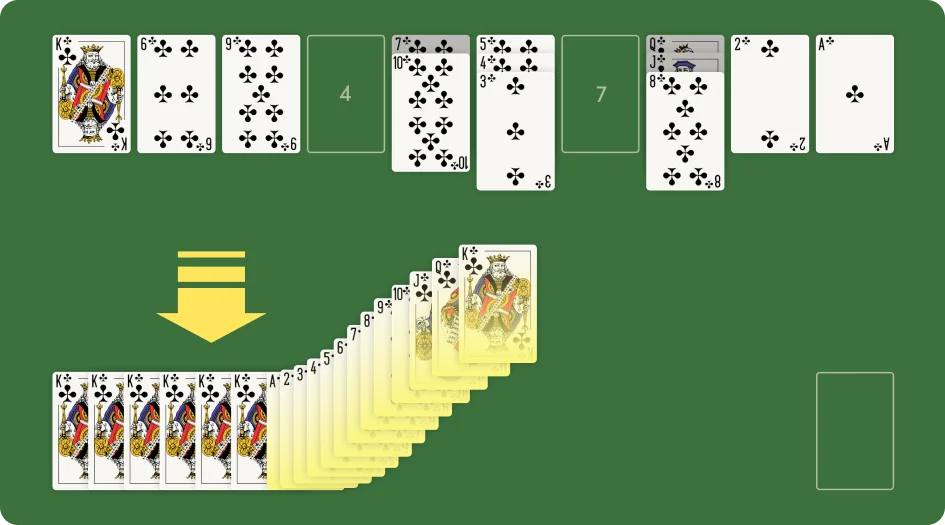
Strategic Moves, Techniques, and Common Mistakes to Avoid
Now that I’ve outlined the basics of 4 Suits Spider Solitaire, we can move on to mastering the game through well-known strategies and techniques. Becoming adept at 4 Suit Spider means you’ll have to account for several strategies. You can’t just depend on a single strategy to carry you home.
Prioritizing Sequences and Exposing Hidden Cards
The first unwritten rule of Solitaire is to stick to the sequences. Of course, everyone knows that, but not many people actively focus on it. Wherever possible, you should focus on creating descending sequences of the same suit. This can mean prioritizing completing a partial sequence of the same suit over a longer mixed-suit sequence.
In a similar vein, revealing hidden cards gets you much closer to your goal of completing sequences. This often involves moving partial sequences or even single cards to empty tableau columns.
Suit Management
In advanced variants like 2 Suits and 4 Suits Spider Solitaire, managing your suits is incredibly important. As a rule of thumb, mixing suits should be a last resort because it can complicate future moves.
Utilizing Empty Tableau Columns
When you create empty spaces by completing and clearing stacks, you generate more options to move cards around. You’ll often find that having this flexibility is crucial for maneuvering and reorganizing sequences early in the game.
For the same reason, you are advised to be cautious when placing Kings in empty spaces. Once a King is placed, the only way to clear that space again is to complete the entire sequence from King to Ace.
Advanced Techniques for Regular Players
A general bit of advice is to think several moves ahead. It’s tempting to just move the next card to its predecessor, but you need to consider the impact of each move (not just immediately but also in future turns). Sometimes, creating temporary mixed-suit sequences can help you achieve your long-term goal of uncovering more cards or building suit sequences.
My final piece of advice is to use the stock pile wisely. You might be tempted to draw from the stock pile when you see that you can’t make any more moves in your ‘favorite column’ (trust me, I know). However, it’s often best to deal with new cards either (a) when you have no other moves left or (b) when dealing with new cards will directly lead to clearing a sequence.
Concluding Remarks
Admittedly, these aren’t all the strategies you’d need to become a 4 Suit Spider Solitaire expert. But, Rome wasn’t built in a day (as they say). At the very least, the above advice will give you a suitable baseline for approaching your Spider Solitaire adventures. And, it’s only up from there.






